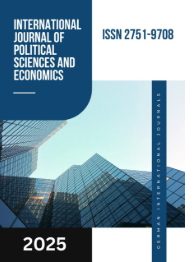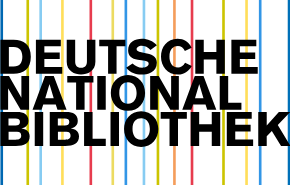CHARACTERISTICS OF CONTEMPORARY POLITICAL AND SOCIAL PROCESSES IN MIDDLE EASTERN COUNTRIES UNDER GLOBALIZATION AND THEIR IMPACT ON YOUTH CONSCIOUSNESS
DOI:
https://doi.org/10.55640/Keywords:
Middle East, Arab Spring, Syria, Tunisia, geopolitics, authority, spiritual decline, political processes.Abstract
This article explores the nature and theoretical dimensions of political and social processes in the Middle East, focusing particularly on the influence of the socio-spiritual environment on youth consciousness in the context of globalization. It analyzes the consequences of recent political events in the region, the dominant geopolitical trends, and post-"Arab Spring" transformations.
References
1. Jacques Benoist-Méchin. Un Printemps Arabe (An Arab Spring), Paris: Albin Michel, 1959.
2. Mehmet Sahin, ‘1950-1960 Arab Revolutions and the 2011 Arab Spring: Similarities and Differences’, in New World Order, Arab Spring and Turkey, B. Senem Cevik-Ersaydi and Bora Baskak (eds.), Ankara: Ankara University Center for the Study and Research for Political Psychology, 2012. pp. 3-5.
3. The Arab Spring. https://en.m.wikipedia.org/wiki/Arab_Spring
4. Aripov Shavkat. “Did the Arab Spring Deliver Its Promised Fruits?” // Uzbekistan-China: Development of Cultural, Historical, Scientific and Economic Relations, 2021 – p.495.
5. Krylov A.V., Fedorchenko A.V., Torin A.I. “The Arab Spring: Outcomes and Perspectives” // MGIMO University Bulletin. 2012, No. 4 (25). pp. 296-299.
6. Manoylo A.V. Features of Color Revolutions in the Arab Spring // Trends in the Modern Political Process, 2013. – p.32.
7. Podgornova N.P. “Arab Spring” in Maghreb Countries. – Moscow, 2014. – p.4.
8. Sundiev I. “Controlled Chaos: Social Technologies in Mass Disorders” // Dictum et Factum, 2014. – p.95.
9. Yagya V.S. International Aspects of the Arab Crisis // The Arab Crisis and Its International Consequences, edited by A.M. Vasiliev, Moscow: LENAND, 2014. – pp.176-238.
Downloads
Published
Issue
Section
License

This work is licensed under a Creative Commons Attribution 4.0 International License.
Authors retain the copyright of their manuscripts, and all Open Access articles are disseminated under the terms of the Creative Commons Attribution License 4.0 (CC-BY), which licenses unrestricted use, distribution, and reproduction in any medium, provided that the original work is appropriately cited. The use of general descriptive names, trade names, trademarks, and so forth in this publication, even if not specifically identified, does not imply that these names are not protected by the relevant laws and regulations.







